![]()
![]()
![]()
Use LEFT and RIGHT arrow keys to navigate between flashcards;
Use UP and DOWN arrow keys to flip the card;
H to show hint;
A reads text to speech;
258 Cards in this Set
- Front
- Back

Acetate
|

A manufactured fiber formed by a compound of cellulose, refined from cotton linters and/or wood pulp, and acetic acid that has been extruded through a spinneret and then hardened.
|
|
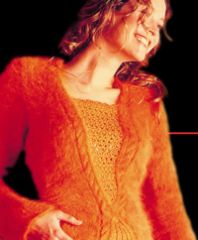
Angora
|

The hair of the Angora goat. Also known as Angora mohair. Angora may also apply to the fur of the Angora rabbit.
|
|

Appliqué
|
A cutout decoration fastened to a larger piece of material.
|
|
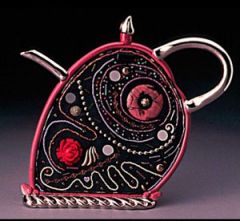
Beaded
|
This refers to any style of fabric that has beads embroidered into the design. Beading can be done at the time the lace is made or can be re-embroidered after the lace is made.
|
|
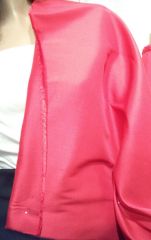
Bengaline
|
A fabric with a crosswise rib made from textile fibers (as rayon, nylon, cotton, or wool) often in combination.
|
|
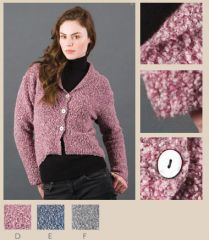
Boucle
|
A knit or woven fabric made from a rough, curly, knotted boucle yarn. The fabric has a looped, knotted surface and is often used in sportswear and coats.
|
|
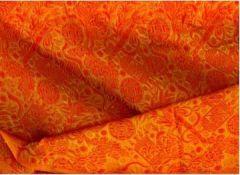
Brocade
|
A heavy, exquisite, jacquard-type fabric with an all-over raised pattern or floral design.
|
|

Cambric
|
A fine thin white linen fabric.
|
|

Canvas
|
A strong, durable, closely woven cotton fabric.
|
|
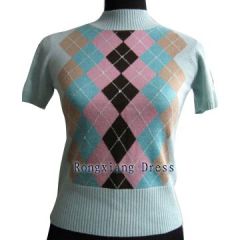
Cashmere
|
A luxury fiber obtained from the soft, fleecy undergrowth of the Kashmir goat of Tibet, Mongolia, China, Iran, Iraq, and India. Most commonly used in sweaters, shawls, suits, coats, and dresses.
|
|
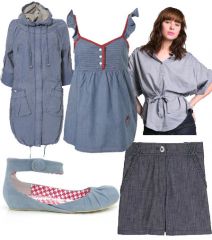
Chambray
|
A plain woven fabric that can be made from cotton, silk, or manufactured fibers, but is most commonly cotton. It incorporates a colored warp (often blue) and white filling yarns.
|
|
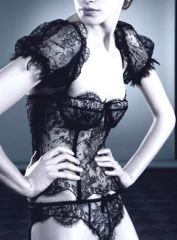
Chantilly lace
|
This lace has a net background, and the pattern is created by embroidering with thread and ribbon to create floral designs. The pattern has areas of design that are very dense, and the pattern is often outlined with heavier cords or threads.
|
|
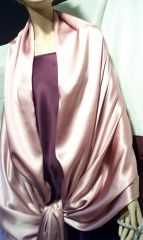
Charmeuse
|
Trade name of silk and silk-like fabrics that are characterized by a shiny, soft, satin-like appearance.
|
|

Chenille
|
Soft, fuzzy yarns stand out around a velvety cord on this fabric, whose name comes from the French word for "caterpillar."
|
|
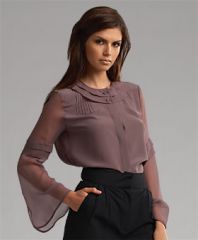
Chiffon
|
A plain, woven, lightweight, extremely sheer, airy, and soft silk fabric, containing highly twisted filament yarns. The fabric, used mainly in evening dresses and scarves, can also be made from rayon and other manufactured fibers.
|
|
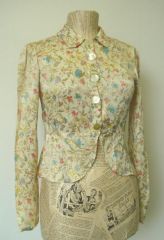
Chintz
|
A usually glazed printed cotton fabric.
|
|
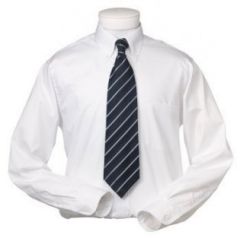
Cotton
|
A unicellular, natural fiber that grows in the seed pod of the cotton plant. Fibers are typically 1/2 inch to 2 inches long. The longest staple fibers, longer than 1-1/2 inch, including the Pima and Egyptian varieties, produce the highest quality cotton fabrics.
|
|
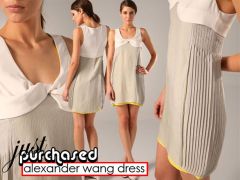
Crepe
|
Used to describe all kinds of fabrics--wool, cotton, silk, rayon, synthetics and blends-that have a crinkle, crimped or grained surface.
|
|
|
Crepe back satin
|
A satin fabric in which highly-twisted yarns are used in the filling direction. The floating yarns are made with low twist and may be of either high or low luster. If the crepe effect is the right side of the fabric, the fabric is called satin-back crepe.
|
|
|
Crinkled
|
Forming many short bends or ripples.
|
|
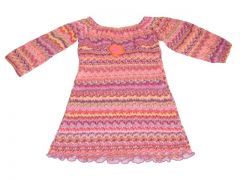
Crocheted
|
Loose, open knit made by looping thread with a hooked needle. Used for light, summer sweaters.
|
|
|
Denim
|
True denim is a twill-weave, cotton-like fabric made with different colored yarns in the warp and the weft. Due to the twill construction, one color predominates on the fabric surface.
|
|
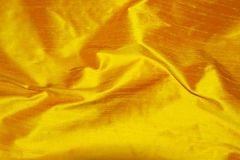
Dupioni
|
Similar to shantung, this textured fabric is recognized by irregular-sized, thick fibers woven into the base fabric. Fibers that create the texture, are thicker and heavier than those used in shantung.
|
|
|
Elastin
|
A protein that is similar to collagen and is the chief constituent of elastic fibers.
|
|
|
Embroidered
|
An embellishment of a fabric or garment in which colored threads are sewn into the fabric to create a design. Embroidery may be done either by hand or machine.
|
|
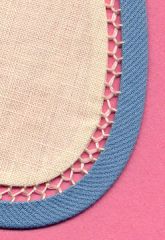
Fagoting
|
An embroidery produced by pulling out horizontal threads from a fabric and tying the remaining cross threads into groups of an hourglass shape.
|
|
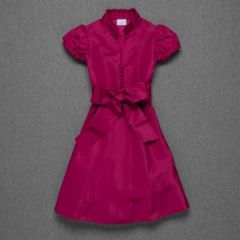
Faille
|
A glossy, soft, finely-ribbed, silk-like woven fabric made from cotton, silk, or manufactured fibers.
|
|
|
Faux fur
|
Artificial fur made from synthetic material.
|
|
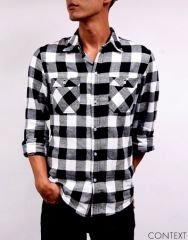
Flannel
|
A warm, soft fabric made in tightly woven twill or plain weave and finished with a light napping.
|
|
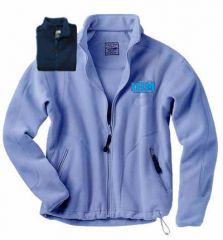
Fleece
|
A soft, bulky, deep-piled knitted or woven fabric.
|
|
|
Foil
|
A thin piece of material put under another material to add color or brilliance.
|
|
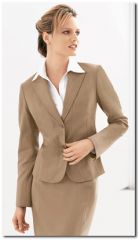
Gabardine
|
A tightly woven, twilled, worsted fabric with a slight diagonal line on the right side. Wool gabardine is known as a year-round fabric for business suiting.
|
|
|
Gauze
|
A thin, sheer plain-weave fabric made from cotton, wool, silk, rayon, or other manufactured fibers. End-uses include curtains, apparel, trimmings, and surgical dressings.
|
|
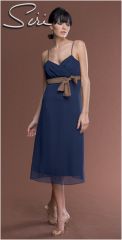
Georgette
|
A sheer lightweight fabric, often made of silk or from such manufactured fibers as polyester, with a crepe surface. End-uses include dresses and blouses.
|
|
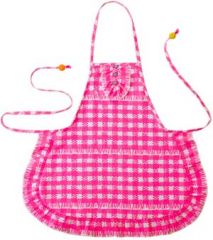
Gingham
|
A medium-weight, plain-weave fabric with a plaid or check pattern.
|
|
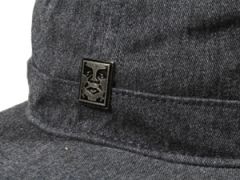
Heather
|
A yarn that is spun using pre-dyed fibers. These fibers are blended together to give a particular look. (For example, black and white may be blended together to create a gray heathered yarn.) The term, heather, may also be used to describe the fabric made from heathered yarns.
|
|
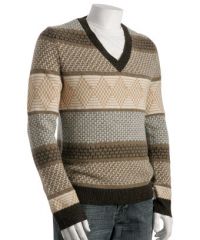
Intarsia
|
A colored design knitted on both sides of a fabric.
|
|
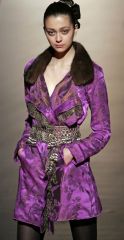
Jacquard
|
Woven fabrics manufactured by using the Jacquard attachment on the loom. This attachment provides versatility in designs and permits individual control of each of the warp yarns. Thus, fabrics of almost any type or complexity can be made. Brocade and damask are types of jacquard woven fabrics.
|
|
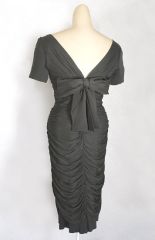
Jersey
|
The consistent interlooping of yarns in the jersey stitch to produce a fabric with a smooth, flat face, and a more textured, but uniform back. Jersey fabrics may be produced on either circular or flat weft knitting machines.
|
|
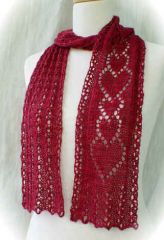
Knit
|
Fabrics made from only one set of yarns, all running in the same direction. Some knits have their yarns running along the length of the fabric, while others have their yarns running across the width of the fabric. Knit fabrics are held together by looping the yarns around each other. Knitting creates ridges in the resulting fabric. Wales are the ridges that run lengthwise in the fabric; courses run crosswise.
|
|
|
Knitted
|
Formed by interlacing yarn or thread in a series of connected loops with needles.
|
|

Lace
|
An ornamental braid for trimming.
|
|
|
Lame like glotique
|
A woven fabric using flat silver or gold metal threads to create either the design or the background in the fabric.
|
|
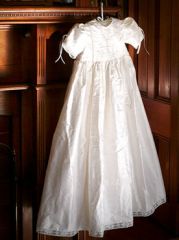
Lawn
|
A light, fine cloth made using carded or combed, linen or cotton yarns. The fabric has a crease-resistant, crisp finish.
|
|
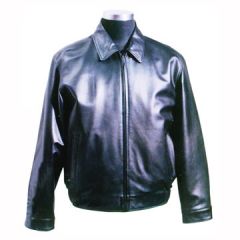
Leather
|
Animal skin dressed for use in clothing.
|
|

Leatherette
|
Simulated leather.
|
|
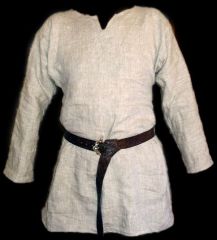
Linen
|
A fabric made from linen fibers obtained from inside the woody stem of the flax plant. Linen fibers are much stronger and more lustrous than cotton. Linen fabrics are very cool and absorbent, but wrinkle very easily, unless blended with manufactured fibers.
|
|
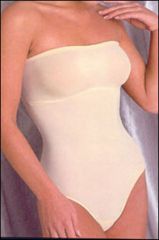
Lycra
|
A DuPont trademark for its spandex fiber. Any time you see this fiber listed on a label, expect comfort, movement, and shape retention that won't wash away.
|
|

Marabou
|
A thrown silk usually dyed in the gum or a fabric made of this silk.
|
|
|
Matte
|
Lacks luster or gloss and has a usually smooth even surface free from shine or highlights.
|
|
|
Mesh
|
A type of fabric characterized by its net-like open appearance, and the spaces between the yarns. Mesh is available in a variety of constructions including wovens, knits, laces, or crocheted fabrics.
|
|
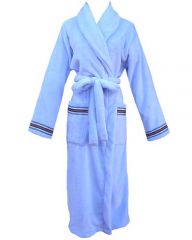
Micro fiber
|
Generic term for any synthetic fiber finer than silk. Fabrics made with micro fibers are soft, lightweight, breathable and durable.
|
|
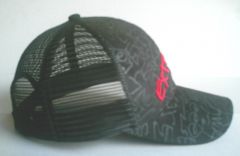
Net
|
An open fabric, which is created by connecting the intersections in a woven, knitted, or crocheted construction to form a mesh-like appearance that won't ravel.
|
|
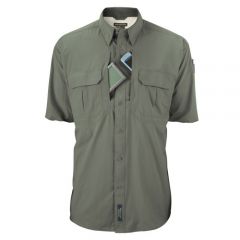
Nylon
|
The first completely synthetic fiber developed. Known for its high strength and excellent resilience, nylon has superior abrasion resistance and high flexibility.
|
|
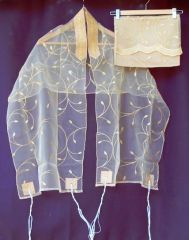
Organza
|
A crisp, sheer, lightweight plain-weave fabric, with a medium to high yarn count, made of silk, rayon, nylon, or polyester. The fabric is used primarily in evening and wedding apparel for women.
|
|

Ottoman
|
A tightly woven, plain-weave, ribbed fabric with a hard, slightly lustered surface. The ribbed effect is created by weaving a finer silk or manufactured warp yarn with a heavier filler yarn, usually made of cotton, wool, or waste yarn. In the construction, the heavier filler yarn is completely covered by the warp yarn, thus creating the ribbed effect.
|
|
|
Pearlized
|
Given a pearlescent surface or finish.
|
|
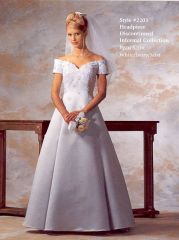
Peau satin
|
A heavy twill weave drapeable satin fabric, made of silk or a manufactured fiber, and used for bridal gowns and evening wear.
|
|
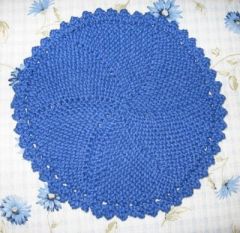
Picot
|
A row of woven loops along the selvage of fabric or lace.
|
|
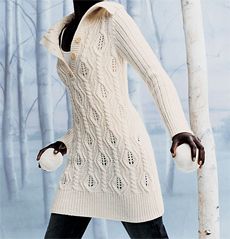
Pointelle
|
Very feminine, delicate-looking, rib-knit fabric made with a pattern of openings.
|
|
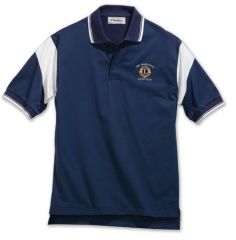
Polyester
|
A manufactured fiber which has high strength, excellent resiliency, and high abrasion resistance. Low absorbency allows the fiber to dry quickly.
|
|
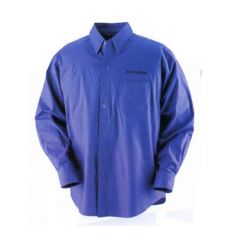
Poplin
|
A fabric made using a rib variation of the plain weave. The construction is characterized by having a slight ridge effect in one direction, usually the filling.
|
|

Ramie
|
A bast fiber, similar to flax, taken from the stalk of a plant grown in China.
|
|
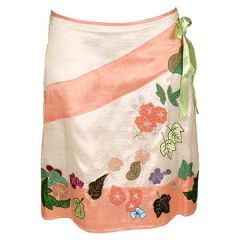
Rayon
|
A manufactured fiber composed of regenerated cellulose, derived from wood pulp, cotton linters, or other vegetable matter.
|
|
|
Re-embroidered
|
To outline a design (as on lace) with embroidery stitching.
|
|

Rhinestoned
|
To attach a colorless imitation stone of high luster made of glass, paste, or gem quartz.
|
|
|
Ribbed
|
To form vertical ridges in knitting.
|
|
|
Ribboned
|
Ribbon lace is made by stitching ribbon onto mesh or net fabrics. The design is usually a random pattern rather than floral.
|
|
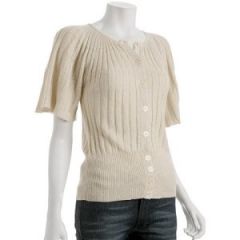
Rib knit
|
A basic stitch used in weft knitting in which the knitting machines require two sets of needles operating at right angles to each other. Rib knits have a very high degree of elasticity in the crosswise direction. This knitted fabric is used for complete garments and for such specialized uses as sleeve bands, neck bands, sweater waistbands, and special types of trims for use with other knit or woven fabrics. Lightweight sweaters in rib knits provide a close, body-hugging fit.
|
|
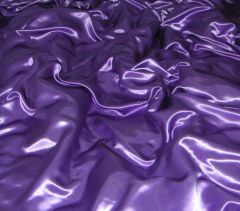
Satin
|
A traditional fabric utilizing a satin weave construction to achieve a lustrous fabric surface. Satin is a traditional fabric for evening and wedding garments. Typical examples of satin weave fabrics include: slipper satin, crepe-back satin, faille satin, bridal satin, moleskin, and royal satin.
|
|
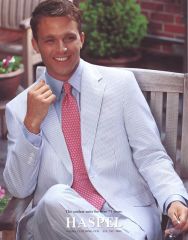
Seersucker
|
A woven fabric which incorporates modification of tension control. In the production of seersucker, some of the warp yarns are held under controlled tension at all times during the weaving, while other warp yarns are in a relaxed state and tend to pucker when the filling yarns are placed. The result produces a puckered stripe effect in the fabric.
|
|

Sequined
|
Ornamented with a small plate of shining metal or plastic.
|
|
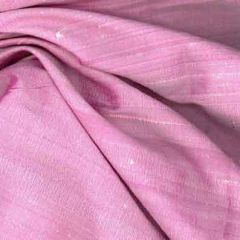
Shantung
|
A medium-weight, plain-weave fabric, characterized by a ribbed effect, resulting from slubbed yarns used in the warp or filling direction. End-uses include dresses and suits.
|
|
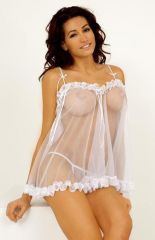
Sheer
|
Any very light-weight fabric (e.g., chiffon, georgette, voile, sheer crepe). Usually has an open weave. Sheers mostly feel cool.
|
|
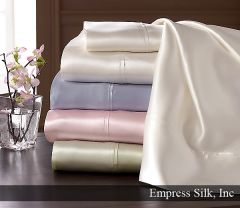
Silk
|
It is obtained from cocoons of certain species of caterpillars. It is soft and has a brilliant sheen. It is one of the finest textiles. It is also very strong and absorbent.
|
|
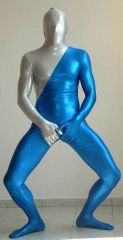
Spandex
|
A manufactured elastomeric fiber that can be repeatedly stretched over 500% without breaking, and will still recover to its original length.
|
|
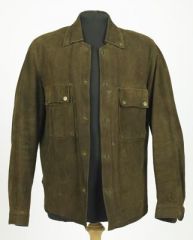
Suede
|
Leather with a napped surface.
|
|
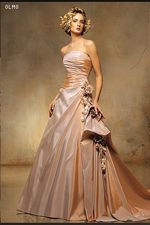
Taffeta
|
A lustrous, medium-weight, plain-weave fabric with a slight ribbed appearance in the filling (crosswise) direction. For formal wear, taffeta is a favorite choice. It provides a crisp hand, with lots of body. Silk taffeta gives the ultimate rustle, but other fibers are also good choices.
|
|
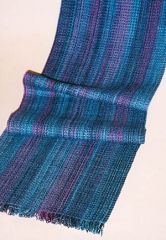
Tencel
|
A trademark of Courtaulds for a high performance fiber used to make soft, beautifully draping rayon fabrics. Tencel is made from wood pulp that is harvested from replenished tree farms. So it's environmentally sensitive and it's washable!
|
|
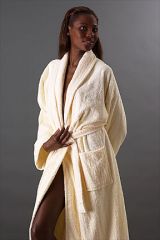
Terry
|
A woven fabric, usually cotton, with loop pile on one or both sides.
|
|
|
Tri-acetate
|
A manufactured fiber, which, like acetate, is made by modifying cellulose. Tri-acetate is less absorbent and less sensitive to high temperatures than acetate. It can be hand or machine washed and tumble dried, with relatively good wrinkle recovery.
|
|
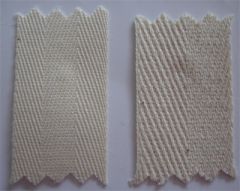
Twill
|
A fabric that shows a distinct diagonal wale on the face (e.g., denim, gabardine, tricotine).
|
|
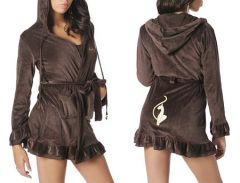
Velour
|
A medium-weight, closely-woven fabric with a thick pile. It can be made using either a plain weave or a satin weave construction. It resembles velvet, but has a lower cut pile.
|
|
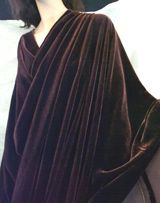
Velvet
|
A medium-weight, cut-pile constructed fabric in which the cut pile stands up very straight. It is woven using two sets of warp yarns; the extra set creates the pile. Velvet, a luxurious fabric, is commonly made with a filament fiber for high luster and smooth hand.
|
|
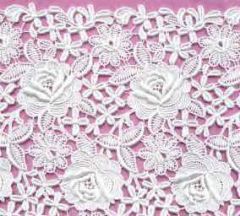
Venice lace
|
This lace often has a high profile, and is made using a needlepoint technique rather than embroidery. A heavier weight lace, the patterns vary from geometric to floral. Each pattern is attached to the others by bars made of thread.
|
|
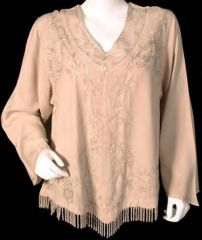
Viscose
|
The most common type of rayon. It is produced in much greater quantity than cuprammonium rayon, the other commercial type.
|
|
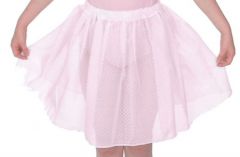
Voile
|
A crisp, lightweight, plain weave cotton-like fabric, made with high twist yarns in a high yarn count construction. Similar in appearance to organdy and organza.
|
|
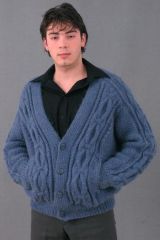
Wool
|
Usually associated with fiber or fabric made from the fleece of sheep or lambs. However, the term "wool" can also apply to all animal hair fibers, including the hair of the Cashmere or Angora goat or the specialty hair fibers of the camel, alpaca, llama, or vicuna.
|
|
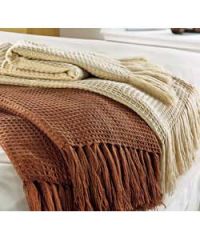
Acrylic
|
A manufactured fiber derived from polyacrylonitrile. Its major properties include a soft, wool-like hand, machine washable and dryable, excellent color retention. Solution-dyed versions have excellent resistance to sunlight and chlorine degradation.
|
|
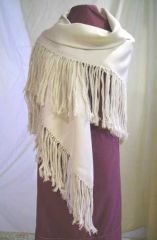
Alpaca
|
A natural hair fiber obtained from the Alpaca sheep, a domesticated member of the llama family. The fiber is most commonly used in fabrics made into dresses, suits, coats, and sweaters.
|
|
|
Barree
|
An imperfection, characterized by a ridge or mark running in the crosswise or lengthwise directions of the fabric. Barree can be caused by tension variations in the knitting process, poor quality yarns, problems during the finishing process.
|
|
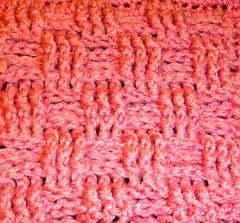
Basket weave
|
A variation of the plain weave construction, formed by treating two or more warp yarns and/or two or more filling yarns as one unit in the weaving process. Yarns in a basket weave are laid into the woven construction flat, and maintain a parallel relationship. Both balanced and unbalanced basket weave fabrics can be produced. Examples of basket weave construction includes monk cloth and oxford cloth.
|
|

Bast fiber
|
Strong, soft, woody fibers, such as flax, jute, hemp, and ramie, which are obtained from the inner bark in the stems of certain plants.
|
|

Batiste
|
A medium-weight, plain weave fabric, usually made of cotton or cotton blends. End-uses include blouses and dresses.
|
|
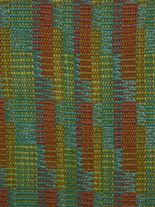
Bedford cord
|
A cord cotton-like fabric with raised ridges in the lengthwise direction. Since the fabric has a high strength and a high durability, it is often used for upholstery and work clothes.
|
|
|
Blend
|
A term applied to a yarn or a fabric that is made up of more than one fiber. In blended yarns, two or more different types of staple fibers are twisted or spun together to form the yarn. Examples of a typical blended yarn or fabric is polyester/cotton.
|
|
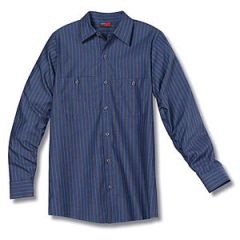
Broadcloth
|
A plain weave tightly woven fabric, characterized by a slight ridge effect in one direction, usually the filling. The most common broadcloth is made from cotton or cotton/polyester blends.
|
|
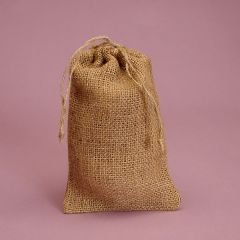
Burlap
|
A loosely constructed, heavy weight, plain weave fabric used as a carpet backing, and as inexpensive packaging for sacks of grain or rice. Also, as fashion dictates, burlap may also appear as a drapery fabric.
|
|
|
Burn-out
|
A brocade-like pattern effect created on the fabric through the application of a chemical, instead of color, during the burn-out printing process. (Sulfuric acid, mixed into a colorless print paste, is the most common chemical used.) Many simulated eyelet effects can be created using this method. In these instances, the chemical destroys the fiber and creates a hole in the fabric in a specific design, where the chemical comes in contact with the fabric. The fabric is then over-printed with a simulated embroidery stitch to create the eyelet effect. However, burn-out effects can also be created on velvets made of blended fibers, in which the ground fabric is of one fiber like a polyester, and the pile may be of a cellulosic fiber like rayon or acetate. In this case, when the chemical is printed in a certain pattern, it destroys the pile in those areas where the chemical comes in contact with the fabric, but leave the ground fabric unharmed.
|
|
|
Calendering
|
A process for finishing fabrics in which such special effects as high luster, glazing, embossing, and moiree are produced.
|
|
|
Calico
|
A tightly-woven cotton type fabric with an all-over print, usually a small floral pattern on a contrasting background color. Common end-uses include dresses, aprons, and quilts.
|
|
|
Camel's hair
|
A natural fiber obtained from the hair of the Bactrian camel, a two-humped pack-carrying species. The fiber is used primarily in coats, sweaters, and suits.
|
|
|
Carding
|
A process which eliminates fibers too short for inclusion in the spun yarn. The process also removes dirt and foreign matter still remaining in the fiber mass, and arranges the fibers into a very thin layer.
|
|
|
Cellulose
|
A material derived from the cell walls of certain plants. Cellulose is used in the production of many vegetable fibers, as well as being the major raw material component used in the production of the manufactured fibers of acetate, rayon, and triacetate.
|
|
|
Challis
|
A lightweight, soft plain weave fabric with a slightly brushed surface. The fabric is often printed, usually in a floral pattern. Challis is most often seen in fabrics made of cotton, wool, or rayon.
|
|
|
Colorfastness
|
A term used to describe a dyed fabric's ability to resist fading due to washing, exposure to sunlight, and other environmental conditions.
|
|
|
Combing
|
The combing process is an additional step beyond carding. In this process the fibers are arranged in a highly parallel form, and additional short fibers are removed, producing high quality yarns with excellent strength, fineness, and uniformity.
|
|
|
Corduroy
|
A fabric, usually made of cotton, utilizing a cut-pile weave construction. Extra sets of filling yarns are woven into the fabric to form ridges of yarn on the surface. The ridges are built so that clear lines can be seen when the pile is cut.
|
|
|
Core-spun yarns
|
Consist of a filament base yarn, with an exterior wrapping of loose fiber which has not been twisted into a yarn. Polyester filament is often wrapped with a cotton outer layer in order to provide the strength and resiliency of polyester, along with the moisture-absorbent aesthetics and dye affinity of cotton. Sewing thread as well as household and apparel fabrics are made from these yarns.
|
|
|
Converter
|
A person or a company which buys grey goods and sells them as finished fabrics. A converter organizes and manages the process of finishing the fabric to a buyers' specifications, particularly the bleaching, dyeing, printing, etc.
|
|
|
Crepe-back satin
|
A satin fabric in which highly twisted yarns are used in the filling direction. The floating yarns are made with low twist and may be of either high or low luster. If the crepe effect is the right side of the fabric, the fabric is called satin-back crepe.
|
|
|
Crinoline
|
A lightweight, plain weave, stiffened fabric with a low yarn count (few yarns to the inch in each direction).
|
|
|
Crocking
|
The rubbing-off of dye from a fabric. Crocking can be the result of lack of penetration of the dyeing agent, the use of incorrect dyes or dyeing procedures, or the lack of proper washing procedures and finishing treatments after the dyeing process.
|
|
|
Cuprammonium
|
A process of producing a type of regenerated rayon fiber. In this process, the wood pulp or cotton liners are dissolved in an ammoniac copper oxide solution. Bemberg rayon is a type of Cuprammonium rayon.
|
|
|
Damask
|
A glossy jacquard fabric, usually made from linen, cotton, rayon, silk, or blends. The patterns are flat and reversible. The fabric is often used in napkins, tablecloths, draperies, and upholstery.
|
|
|
Denier
|
A system of measuring the weight of a continuous filament fiber. In the United States, this measurement is used to number all manufactured fibers (both filament and staple), and silk, but excluding glass fiber. The lower the number, the finer the fiber; the higher the number, the heavier the fiber. Numerically, a denier is the equivalent to the weight in grams of 9,000 meters of continuous filament fiber.
|
|
|
Dobby weave
|
A decorative weave, characterized by small figures, usually geometric, that are woven into the fabric structure. Dobbies may be of any weight or compactness, with yarns ranging from very fine to coarse and fluffy. Standard dobby fabrics are usually flat and relatively fine or sheer. However, some heavyweight dobby fabrics are available for home furnishings and for heavy apparel.
|
|
|
Doeskin
|
Generally applied to a type of fabric finish in which a low nap is brushed in one direction to create a soft suede-like hand on the fabric surface. End-uses include billiard table surfaces and men's' sportswear.
|
|
|
Donegal tweed
|
A medium to heavy of plain or twill weave fabric in which colorful yarn slubs are woven into the fabric. The name originally applied to a hand-woven woolen tweed fabric made in Donegal, Ireland. End-uses include winter coats and suits.
|
|
|
Dotted Swiss
|
A lightweight, sheer cotton or cotton blend fabric with a small dot flock-like pattern either printed on the surface of the fabric, or woven into the fabric. End-uses for this fabric include blouses, dresses, baby clothes, and curtains.
|
|
|
Double cloth
|
A fabric construction, in which two fabrics are woven on the loom at the same time, one on top of the other. In the weaving process, the two layers of woven fabric are held together using binder threads. The woven patterns in each layer of fabric can be similar or completely different.
|
|
|
Double knit
|
A weft knit fabric in which two layers of loops are formed that cannot be separated. A double knit machine, which has two complete sets of needles, is required for this construction.
|
|
|
Double weave
|
A woven fabric construction made by interlacing two or more sets of warp yarns with two or more sets of filling yarns. The most common double weave fabrics are made using a total of either four or five sets of yarns.
|
|
|
Duck
|
A tightly woven, heavy, plain-weave, bottom-weight fabric with a hard, durable finish. The fabric is usually made of cotton, and is widely used in men's and women's slacks, and children's playclothes.
|
|
|
Durability
|
The ability of a fabric to resist wear through continual use.
|
|
|
Durable press
|
A treatment applied to the fabric in the finishing process in which it maintains a smooth attractive appearance, resists wrinkling, and retains creases or pleats during laundering.
|
|
|
Elasticity
|
The ability of a fiber or fabric to return to its original length, shape, or size immediately after the removal of stress.
|
|
|
Embossing
|
A calendering process in which fabrics are engraved with the use of heated rollers under pressure to produce a raised design on the fabric surface.
|
|
|
Embroidery
|
An embellishment of a fabric or garment in which colored threads are sewn on to the fabric to create a design. Embroidery may be done either by hand or machine.
|
|
|
Eyelet
|
A type of fabric which contains patterned cut-outs, around which stitching or embroidery may be applied in order to prevent the fabric from raveling.
|
|
|
Face
|
The right side or the better-looking side of the fabric.
|
|
|
Facing
|
A piece of fabric that is sewn to the collar, front opening, cuffs, or arms eye of a garment to create a finished look.
|
|
|
Felt
|
A non-woven fabric made from wool, hair, or fur, and sometimes in combination with certain manufactured fibers, where the fibers are locked together in a process utilizing heat, moisture, and pressure to form a compact material.
|
|
|
Fiber
|
The basic entity, either natural or manufactured, which is twisted into yarns, and then used in the production of a fabric.
|
|
|
Fiberfill
|
Specially engineered manufactured fibers, which are used as filler material in pillows, mattresses, mattress pads, sleeping bags, comforters, quilts, and outerwear.
|
|
|
Filament
|
A manufactured fiber of indefinite length (continuous), extruded from the spinneret during the fiber production process.
|
|
|
Filling
|
In a woven fabric, the yarns that run cross the fabric from selvage to selvage, and which run perpendicular to the warp or lengthwise yarns. Also referred to as the weft.
|
|
|
Findings
|
Any extra items attached to a garment during the manufacturing process. This can include trims, buttons, hooks, snaps, or embellishments.
|
|
|
Finished fabric
|
A fabric that has gone through all the necessary finishing processes, and is ready to be used in the manufacturing of garments.
|
|
|
Flame resistant
|
A term used to describe a fabric that burns very slowly, or has the ability to self-extinguish upon the removal of an external flame.
|
|
|
Flame retardant
|
A chemical applied to a fabric, or incorporated into the fiber at the time of production, which significantly reduces a fabric's flammability.
|
|
|
Flannelette
|
A medium-weight, plain weave fabric with a soft hand, usually made from cotton. The fabric is usually brushed only on one side, and is lighter weight than flannel. End-uses include shirts and pajamas.
|
|
|
Flax
|
The plant from which cellulosic linen fiber is obtained. Linen is used in apparel, accessories, draperies, upholstery, tablecloths, and towels.
|
|
|
Flocking
|
A type of raised decoration applied to the surface of a fabric in which an adhesive is printed on the fabric in a specific pattern, and then finely chopped fibers are applied by means of dusting, air-brushing, or electrostatic charges. The fibers adhere only to the areas where the adhesive has been applied, and the excess fibers are removed by mechanical means.
|
|
|
Foulard
|
A lightweight twill-weave fabric, made from filament yarns like silk, acetate, polyester, with a small all-over print pattern on a solid background. The fabric is often used in men's ties.
|
|
|
Gauge
|
A measurement most commonly associated with knitting equipment. It can mean the number of needles per inch in a knitting machine. However, in full fashioned hosiery and sweater machines, the number of needles per 1-1/2 inches represents the gauge.
|
|
|
Geotextiles
|
Manufactured fiber materials made into a variety of fabric constructions, and used in a variety civil engineering applications.
|
|
|
Glass fiber
|
An inorganic fiber which is very strong, but has poor flexibility and poor abrasion resistance. Glass will not burn and will not conduct electricity. It is impervious to insects, mildew, and sunlight. Today, the primary use of glass fiber is in such industrial applications as insulation or reinforcement of composite structures.
|
|
|
Greige goods
|
An unfinished fabric, just removed from a knitting machine or a loom. Also called grey goods.
|
|
|
Hand
|
The way the fabric feels when it is touched. Terms like softness, crispness, dryness, silkiness are all terms that describe the hand of the fabric.
|
|
|
Hemp
|
A coarse, durable bast fiber obtained from the inner bark of the hemp plant. Used primarily in twines and cordages, and most recently apparel.
|
|
|
Herringbone
|
A variation on the twill weave construction in which the twill is reversed, or broken, at regular intervals, producing a zig-zag effect.
|
|
|
Houndstooth check
|
A variation on the twill weave construction in which a broken check effect is produced by a variation in the pattern of interlacing yarns, utilizing at least two different colored yarns.
|
|
|
Hydrophilic fibers
|
Fibers that absorb water easily, take longer to dry, and require more ironing.
|
|
|
Hydrophobic fiber
|
Fibers that lack the ability to absorb water.
|
|
|
Interlining
|
An insulation, padding, or stiffening fabric, either sewn to the wrong side of the lining or the inner side of the outer shell fabric. The interlining is used primarily to provide warmth in coats, jackets, and outerwear.
|
|
|
Interfacing
|
Fabrics used to support, reinforce and give shape to fashion fabrics in sewn products. Often placed between the lining and the outer fabric., it can be made from yarns or directly from fibers, and may be either woven, nonwoven, or knitted. Some interfacings are designed to be fused (adhered with heat from an iron), while others are meant to be stitched to the fashion fabric.
|
|
|
Interlock
|
The stitch variation of the rib stitch, which resembles two separate 1 x 1 ribbed fabrics that are interknitted. Plain (double knit) interlock stitch fabrics are thicker, heavier, and more stable than single knit constructions.
|
|
|
Jacquard knit
|
A weft double knit fabric in which a Jacquard type of mechanism is used. This device individually controls needles or small groups of needles, and allows very complex and highly patterned knits to be created.
|
|
|
Jersey fabric
|
The consistent interlooping of yarns in the jersey stitch to produces a fabric with a smooth, flat face, and a more textured, but uniform back. Jersey fabrics may be produced on either circular or flat weft knitting machines.
|
|
|
Jersey stitch
|
A basic stitch used in weft knitting, in which each loop formed in the knit is identical. The jersey stitch is also called the plain, felt, or stockinet stitch.
|
|
|
Jute
|
A bast fiber, chiefly from India, used primarily for gunny sacks, bags, cordage, and binding threads in carpets and rugs.
|
|
|
Kapok
|
A short, lightweight, cotton-like, vegetable fiber found in the seed pods of the Bombocaceae tree. Because of its brittle quality, it is generally not spun. However, its buoyancy and moisture resistance makes it ideal for use in cushions, mattresses, and life jackets.
|
|
|
Knit-de-knit
|
A type of yarn texturizing in which a crimped yarn is made by knitting the yarn into a fabric, and then heat-setting the fabric. The yarn is then unraveled from the fabric and used in this permanently crinkled form.
|
|
|
Knit fabrics
|
Fabrics made from only one set of yarns, all running in the same direction. Some knits have their yarns running along the length of the fabric, while others have their yarns running across the width of the fabric. Knit fabrics are held together by looping the yarns around each other. Knitting creates ridges in the resulting fabric. Wales are the ridges that run lengthwise in the fabric; courses run crosswise.
|
|
|
Lamb's wool
|
The first clip of wool sheered from lambs up to eight months old. The wool is soft, slippery and resilient. It is used in fine grade woolen fabrics.
|
|
|
Lamee
|
A woven fabric using flat silver or gold metal threads to create either the design or the background in the fabric.
|
|
|
Leno weave
|
A construction of woven fabrics in which the resulting fabric is very sheer, yet durable. In this weave, two or more warp yarns are twisted around each other as they are interlaced with the filling yarns; thus securing a firm hold on the filling yarn and preventing them from slipping out of position. Also called the gauze weave. Leno weave fabrics are frequently used for window treatments, because their structure gives good durability with almost no yarn slippage, and permits the passage of light and air.
|
|
|
Lining
|
A fabric that is used to cover the inside of a garment to provide a finished look. Generally, the lining is made of a smooth lustrous fabric.
|
|
|
Loom
|
A machine used for weaving fabrics.
|
|
|
Lyocell fiber
|
A manufactured fiber composed of regenerated cellulose. Lyocell has a similar hand and drape as rayon, but is stronger, more durable, and in many cases machine washable. It has a subtle luster and is rich in color. Lyocell possesses low shrinkage characteristics, as well as good absorbency and wrinkle resistant qualities.
|
|
|
Madras
|
A lightweight plain weave cotton fabric with a striped, plaid, or checked pattern. A true madras will bleed when washed. This type of fabric is usually imported from India. End-uses are men's and women's shirts and dresses.
|
|
|
Matelassee
|
A medium to heavyweight luxury fabric made in a double cloth construction to create a blistered or quilted surface. Common end-uses are upholstery, draperies, and evening dresses.
|
|
|
Melton
|
A heavyweight, dense, compacted, and tightly woven wool or wool blend fabric used mainly for coats.
|
|
|
Mercerization
|
A process of treating a cotton yarn or fabric, in which the fabric or yarn is immersed in a caustic soda solution and later neutralized in acid. The process causes a permanent swelling of the fiber, resulting in an increased luster on the surface of the fabric, an increased affinity for dyes, and increased strength.
|
|
|
Merino
|
A type of wool that originates from pure-bred Merino sheep. The best Merino wool comes from Italy.
|
|
|
Metallic fiber
|
An inorganic fiber made from minerals and metals, blended and extruded to form fibers. The fiber is formed from a flat ribbon of metal, coated with a protective layer of plastic, which reduces tarnishing. Metal used in apparel fabric is purely decorative.
|
|
|
Modacrylic fiber
|
A manufactured fiber similar to acrylic in characteristics and end-uses. Modacrylics have a higher resistance to chemicals and combustion than acrylic, but also have a lower safe ironing temperature and a higher specific gravity than acrylic.
|
|
|
Mohair
|
Hair fibers from the Angora goat. End-uses include sweaters, coats, suits, and scarves.
|
|
|
Moiree
|
A corded fabric, usually made from silk or one of the manufactured fibers, which has a distinctive water-marked wavy pattern on the face of the fabric.
|
|
|
Moisture regain
|
The amount of water a completely dry fiber will absorb from the air at a standard condition of 70 degrees F and a relative humidity of 65%. Expressed as a % of the dry fiber weight.
|
|
|
Moisture transport
|
The movement of water from one side of a fabric to the other, caused by capillary action, wicking, chemical or electrostatic action.
|
|
|
Monk's cloth
|
A heavy weight cotton fabric utilizing the basket weave variation of the plain weave. Used for draperies and slip covers, monk's cloth is an example of 4 x 4 basket weave. It has poor dimensional stability and tends to snag.
|
|
|
Monofilament
|
A single filament of a manufactured fiber, usually made in a denier higher than 14. Monofilaments are usually spun singularly, rather than extruded as a group of filaments through a spinneret and spun into a yarn. End-uses include hosiery and sewing thread.
|
|
|
Muslin
|
An inexpensive, medium weight, plain weave, low count (less than 160 threads per square inch) cotton sheeting fabric. In its unfinished form, it is commonly used in fashion design to make trial garments for preliminary fit.
|
|
|
Nainsook
|
A lightweight plain weave cotton fabric, usually finished to create a luster and a soft hand. Common end-uses are infants' wear, blouses, and lingerie.
|
|
|
Nap
|
A fuzzy, fur-like feel created when fiber ends extend from the basic fabric structure to the fabric surface. The fabric can be napped on either one or both sides.
|
|
|
Ninon
|
A lightweight, plain weave, made of silk or manufactured fibers, with an open mesh-like appearance. Since the fabric is made with high twist filament yarns, it has a crisp hand. End uses include eveningwear and curtains.
|
|
|
Nonwoven fabric
|
Fabrics made directly from individual fibers that are matted together by forming an interlocking web of fibers either mechanically (tangling together) or chemically (gluing, bonding, or melting together).
|
|
|
Novelty yarn
|
A yarn that is intentionally produced to have a special or unique effect. These effects can be produced by twisting together uneven single yarns, by using yarns that contain irregularities, or by twisting yarns that contain a color variance. A slubbed yarn is an example of a novelty yarn.
|
|
|
Nytril
|
A manufactured fiber, most often used in sweaters or pile fabrics, where little or no pressing is recommended, as the fiber has a low softening or melting point. However, it has also been successfully used in blends with wool for the purpose of minimizing shrinkage and improving the shape retention in garments.
|
|
|
Olefin
|
(also known as polyolefin and polypropylene)
A manufactured fiber characterized by its light weight, high strength, and abrasion resistance. Olefin is also good at transporting moisture, creating a wicking action. End-uses include activewear apparel, rope, indoor-outdoor carpets, lawn furniture, and upholstery. |
|
|
Organdy
|
A stiffened, sheer, lightweight plain weave fabric, with a medium to high yarn count. End-uses include blouses, dresses, and curtains/draperies.
|
|
|
Osnaburg
|
A tough medium to heavyweight coarsely woven plain weave fabric, usually made of a cotton or cotton/poly blend. Lower grades of the unfinished fabric are used for such industrial purposes as bags, sacks, pipe coverings. Higher grades of finished osnaburg can be found in mattress ticking, slipcovers, workwear, and apparel.
|
|
|
Oxford
|
A fine, soft, lightweight woven cotton or blended with manufactured fibers in a 2 x 1 basket weave variation of the plain weave construction. The fabric is used primarily in shirtings.
|
|
|
Paisley
|
A tear-drop shaped, fancy printed pattern, used in dresses, blouses, and men's ties.
|
|
|
Pannee velvet
|
A type of lustrous, lightweight velvet fabric, usually made of silk or a manufactured fiber, in which the pile has been flattened in one direction.
|
|
|
Peau de soie
|
A heavy twill weave drapeable satin fabric, made of silk or a manufactured fiber, and used for bridal gowns and eveningwear.
|
|
|
Percale
|
A medium weight, plain weave, low to medium count (180 to 250 threads per square inch) cotton-like fabric. End-uses include sheets, blouses, and dresses.
|
|
|
Pile knit
|
A type of knit construction which utilizes a special yarn or a sliver that is interlooped into a standard knit base. This construction is used in the formation of imitation fur fabrics, in special liners for cold weather apparel such as jackets and coats, and in some floor coverings. While any basic knit stitch may be used for the base of pile knits, the most common is the jersey stitch.
|
|
|
Pile weave
|
A type of decorative weave in which a pile is formed by additional warp or filling yarns interlaced in such a way that loops are formed on the surface or face of the fabric. The loops may be left uncut, or they may be cut to expose yarn ends and produce cut pile fabric.
|
|
|
Pill
|
A tangled ball of fibers that appears on the surface of a fabric, as a result of wear or continued friction or rubbing on the surface of the fabric.
|
|
|
Piquee
|
A medium-weight fabric, either knit or woven, with raised dobby designs including cords, wales, waffles, or patterns. Woven versions have cords running lengthwise, or in the warp direction. Knitted versions are double-knit fabric constructions, created on multi-feed circular knitting machines.
|
|
|
Plain weave
|
A basic weave, utilizing a simple alternate interlacing of warp and filling yarns. Any type of yarn made from any type of fiber can be manufactured into a plain weave fabric.
|
|
|
Plied yarn
|
A twisting together of two or more single yarns in one operation.
|
|
|
Plissee
|
A lightweight, plain weave, fabric, made from cotton, rayon, or acetate, and characterized by a puckered striped effect, usually in the warp direction. The crinkled effect is created through the application of a caustic soda solution, which shrinks the fabric in the areas of the fabric where it is applied. Plissee is similar in appearance to seersucker. End-uses include dresses, shirtings, pajamas, and bedspreads.
|
|
|
Polypropylene
|
(also known as polyolefin and Olefin)
A manufactured fiber characterized by its light weight, high strength, and abrasion resistance. Polypropylene is also good at transporting moisture, creating a wicking action. End-uses include activewear apparel, rope, indoor-outdoor carpets, lawn furniture, and upholstery. |
|
|
Pongee
|
The most common form is a naturally colored lightweight, plain weave, silk-like fabric with a slubbed effect. End-uses include blouses, dresses, etc.
|
|
|
Purl stitch
|
A basic stitch used in weft knitting, which produces knit fabrics that have the same appearance on both sides. The purl stitch is frequently used in combination with the jersey and rib stitches to produce a knitted fabric design. Sweaters, knitted fabrics for infants and children's wear, knitted fabrics for specialized sportswear, and bulky knit fabrics are commonly made using the purl stitch.
|
|
|
Quilting
|
A fabric construction in which a layer of down or fiberfill is placed between two layers of fabric, and then held in place by stitching or sealing in a regular, consistent, all-over pattern on the goods.
|
|
|
Raschel knit
|
A warp knitted fabric in which the resulting knit fabric resembles hand crocheted fabrics, lace fabrics, and nettings. Raschel warp knits contain inlaid connecting yarns in addition to columns of knit stitches.
|
|
|
Rib weave
|
One of the plain weave variations, which is formed by using: 1) heavy yarns in the warp or filling direction, or 2) a substantially higher number of yarns per inch in one direction than in the other, or 3) several yarns grouped together as one. Rib fabrics are all characterized by having a slight ridge effect in one direction, usually the filling. Such fabrics may have problems with yarn slippage, abrasion resistance, and tear strength. Examples of this construction include broadcloth, poplin, taffeta, faille, shantung, and cord fabric.
|
|
|
Repellency
|
The ability of a fabric to resist such things as wetting and staining by water, stains, soil, etc.
|
|
|
Resiliency
|
The ability of a fabric to spring back to its original shape after being twisted, crushed, wrinkled, or distorted in any way.
|
|
|
Rip-stop nylon
|
A lightweight, wind resistant, and water resistant plain weave fabric. Large rib yarns stop tears without adding excess weight to active sportswear apparel and outdoor equipment such as sleeping bags and tents.
|
|
|
Sailcloth
|
Any heavy, plain-weave canvas fabric, usually made of cotton, linen, polyester, jute, nylon, etc. that is used for sails and apparel (i.e. bottomweight sportswear).
|
|
|
Saran fiber
|
A manufactured fiber which has an excellent resistance to sunlight and weathering, and is used in lawn furniture, upholstery, and carpets.
|
|
|
Sateen fabric
|
A fabric made from yarns with low luster, such as cotton or other staple length fibers. The fabric has a soft, smooth hand and a gentle, subtle luster. Sateen fabrics are often used for draperies and upholstery.
|
|
|
Sateen weave
|
A variation of the satin weave, produced by floating fill yarns over warp yarns.
|
|
|
Satin weave
|
A basic weave, characterized by long floats of yarn on the face of the fabric. The yarns are interlaced in such a manner that there is no definite, visible pattern of interlacing and, in this manner, a smooth and somewhat shiny surface effect is achieved. The shiny surface effect is further increased through the use of high luster filament fibers in yarns which also have a low amount of twist. A true satin weave fabric always has the warp yarns floating over filling yarns.
|
|
|
Selvage/Selvedge
|
The thin compressed edge of a woven fabric which runs parallel to the warp yarns and prevents raveling. It is usually woven, utilizing tougher yarns and a tighter construction than the rest of the fabric.
|
|
|
Serge
|
A fabric with a smooth hand that is created by a two-up, two-down twill weave.
|
|
|
Serging
|
An overcasting technique done on the cut edge of a fabric to prevent raveling.
|
|
|
Sharkskin
|
A hard-finished, low lustered, medium-weight fabric in a twill-weave construction. It is most commonly found in men's worsted suitings; however, it can also be found in a plain-weave construction of acetate, triacetate, and rayon for women's sportswear.
|
|
|
Silk
|
A natural filament fiber produced by the silkworm in the construction of its cocoon. Most silk is collected from cultivated worms; Tussah silk, or wild silk, is a thicker, shorter fiber produced by worms in their natural habitat. All silk comes from Asia, primarily China.
|
|
|
Sisal
|
A strong bast fiber that originates from the leaves of the Agave plant, which is found in the West Indies, Central America, and Africa. End-uses include cordage and twine.
|
|
|
Solution-dyed
|
A type of fiber dyeing in which colored pigments are injected into the spinning solution prior to the extrusion of the fiber through the spinneret. Fibers and yarns colored in this manner are color-fast to most destructive agents.
|
|
|
Spandex fiber
|
A manufactured elastomeric fiber that can be repeatedly stretched over 500% without breaking, and will still recover to its original length.
|
|
|
Spinneret
|
A metal nozzle type device with very fine holes used in the spinning process of manufactured fibers. The spinning solution is forced or extruded through the small holes to form continuous filament fibers. The holes in the spinneret can vary in diameter to produce fibers of various denier.
|
|
|
Spot weave
|
A woven construction in which patterns are built in at spaced intervals through the use of extra warp and/or extra fill yarns are placed in selected areas. These yarns are woven into the fabric by means of a dobby or Jacquard attachment.
|
|
|
Spun yarn
|
A yarn made by taking a group of short staple fibers, which have been cut from the longer continuous filament fibers, and then twisting these short staple fibers together to form a single yarn, which is then used for weaving or knitting fabrics.
|
|
|
Staple fibers
|
Short fibers, typically ranging from 1/2 inch up to 18 inches long. Wool, cotton, and flax exist only as staple fibers. Manufactured staple fibers are cut to a specific length from the continuous filament fiber. Usually the staple fiber is cut in lengths ranging from 1-1/2 inches to 8 inches long. A group of staple fibers are twisted together to form a yarn, which is then woven or knit into fabrics.
|
|
|
Surah
|
A light weight, lustrous twill weave constructed fabric with a silk-like hand. Surah is the fabric of ties, dresses, and furnishings. It is available in silk, polyester, and rayon.
|
|
|
Tapestry
|
A heavy, often hand-woven, ribbed fabric, featuring an elaborate design depicting a historical or current pictorial display. The weft-faced fabric design is made by using colored filling yarns, only in areas where needed, that are worked back and forth over spun warp yarns, which are visible on the back. End-uses include wall hangings and upholstery.
|
|
|
Tension control weave
|
A type of decorative weave, characterized by a puckered effect which occurs because the tension in the warp yarns is intentionally varied before the filling yarns are placed in the fabric.
|
|
|
Terry cloth
|
A typical uncut pile weave fabric. This fabric is formed by using two sets of warp yarns. One set of warp yarns is under very little tension; when the filling yarns are packed into place, these loose yarns are pushed backward along with the filling yarns, and loops are formed. Typical uses include towels, robes, and apparel.
|
|
|
Terry velour
|
A pile weave cotton fabric with an uncut pile on one side and a cut pile on the reverse side. Terry velour is valued for its soft, luxurious hand. Typical uses include towels, robes, and apparel.
|
|
|
Ticking
|
A tightly woven, very durable fabric, usually made of cotton, and used for covering mattresses, box springs, pillows, and work clothes. The fabric can be made by using a plain, satin, or twill weave construction.
|
|
|
Triacetate
|
A manufactured fiber, which like acetate, is made by modifying cellulose. However, even more acetate groups have been added to create this fiber. Triacetate is less absorbent and less sensitive to high temperatures than acetate. It can be hand or machine washed and tumble dried, with relatively good wrinkle recovery.
|
|
|
Tricot knit
|
A warp knit fabric in which the fabric is formed by interlooping adjacent parallel yarns. The warp beam holds thousands of yards of yarns in a parallel arrangement, and these yarns are fed into the knitting area simultaneously. Sufficient yarns to produce the final fabric width and length are on the beam. Tricot knits are frequently used in women's lingerie items such as slips, bras, panties, and nightgowns.
|
|
|
Tulle
|
A lightweight, extremely fine, machine-made netting, usually with a hexagon shaped mesh effect. End-uses include dance costumes and veils.
|
|
|
Tweed
|
A medium to heavy weight, fluffy, woolen, twill weave fabric containing colored slubbed yarns. Common end-uses include coats and suits.
|
|
|
Twillweave
|
A basic weave in which the fabrics are constructed by interlacing warp and filling yarns in a progressive alternation which creates a diagonal effect on the face, or right side, of the fabric. In some twill weave fabrics, the diagonal effect may also be seen clearly on the back side of the fabric.
|
|
|
Twist
|
A term that applies to the number of turns and the direction that two yarns are turned during the manufacturing process. The yarn twist brings the fibers close together and makes them compact. It helps the fibers adhere to one another, increasing yarn strength. The direction and amount of yarn twist helps determine appearance, performance, durability of both yarns and the subsequent fabric or textile product. Single yarns may be twisted to the right (S twist) or to the left (Z twist). Generally, woolen and worsted yarns are S-twist, while cotton and flax yarns are typically Z-twist. Twist is generally expressed as turns per inch (tpi), turns per meter (tpm), or turns per centimeter (tpc).
|
|
|
Velveteen
|
A cotton cut-pile weave fabric, utilizing extra fill yarn construction, with either a twill or a plain weave back. The fabric is woven with two sets of filling yarns; the extra set creates the pile.
|
|
|
Viscose
|
The most common type of rayon. It is produced in much greater quantity than cuprammonium rayon, the other commercial type.
|
|
|
Warp
|
In woven fabric, the yarns that run lengthwise and is interwoven with the fill (weft) yarns.
|
|
|
Warp knit
|
A type of knitted fabric construction in which the yarns are formed into stitches in a lengthwise manner. Warp knits are generally less elastic than weft knits. Common examples of warp knits are tricot knits and raschel knits.
|
|
|
Waterproof
|
A term applied to fabrics whose pores have been closed, and therefore, will not allow water or air to pass through them.
|
|
|
Water repellent
|
A term applied to fabrics that have been treated with a finish which causes them to shed water, but are still air-permeable.
|
|
|
Weft
|
In woven fabric, the filling yarns that run perpendicular to the warp yarns.
|
|
|
Weft knit
|
A type of knitted fabric in which yarns are formed into stitches in widthwise manner. Common examples of weft knits are circular knits and flat knits.
|
|
|
Wickability
|
The ability of a fiber or a fabric to disperse moisture and allow it to pass through to the surface of the fabric, so that evaporation can take place.
|
|
|
Worsted fabric
|
A tightly woven fabric made by using only long staple, combed wool or wool-blend yarns. The fabric has a hard, smooth surface. Gabardine is an example of a worsted fabric. A common end use is men's tailored suits.
|
|
|
Woven fabric
|
Fabrics composed of two sets of yarns. One set of yarns, the warp, runs along the length of the fabric. The other set of yarns, the fill or weft, is perpendicular to the warp. Woven fabrics are held together by weaving the warp and the fill yarns over and under each other.
|
|
|
Wrinkle recovery
|
Similar to resiliency. It is the ability of a fabric to bounce back after it has been twisted, wrinkled, or distorted in any way.
|
|
|
Yarn
|
A continuous strand of textile fibers created when a cluster of individual fibers are twisted together. These long yarns are used to create fabrics, either by knitting or weaving.
|
|
|
Organza
|
A sheer rayon, nylon, or silk fabric constructed in plain weave and with a crisp finish, used in the manufacture of evening dresses, trimmings, etc.
|

